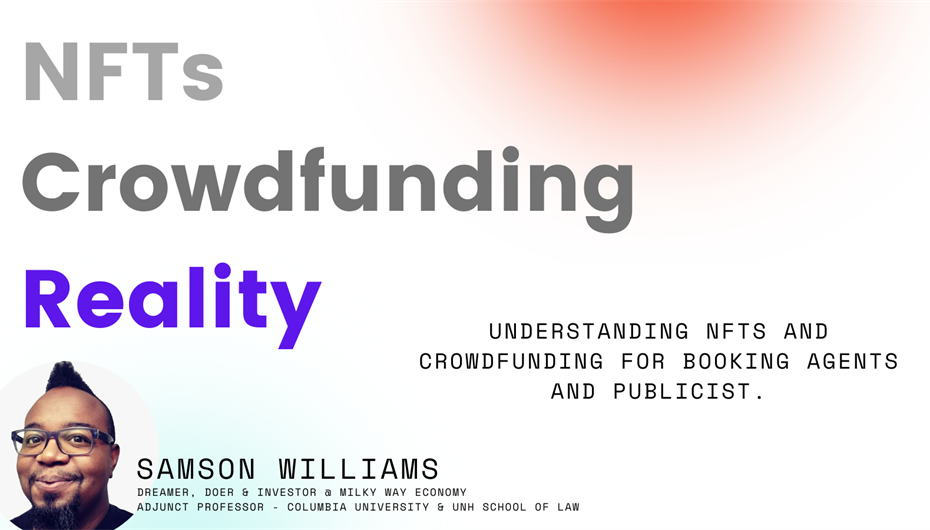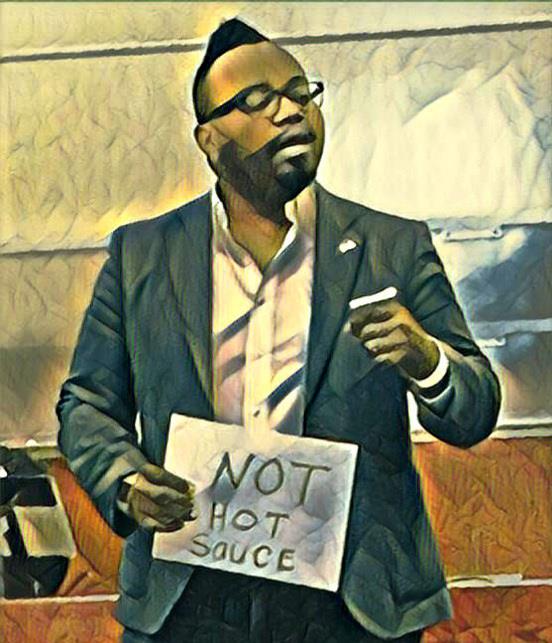This is for Natasha Taylor as she, like most professionals, have been inundated with so much misinformation about NFTs that it makes a sane rational person feel crazy. You’re not crazy. Your rational brain is just warning you not to drink the kool aid. Because regardless of the flavor (Non-Fungible Token) the kool aid is still laced with bullshit.
Non-Fungible
The easiest way to understand the term “non-fungible” is to remember that your friends are non-fungible. Meaning, you can’t replace your BFFE with someone else. Why? They’re unique and irreplaceable. Hence why if you treat your “friends” like they’re replaceable (fungible) you’ll find yourself all by yourself. A non-fungible token is like your best friend, you can’t just replace it with something else. Thats it. Got it?
NFTs and Digital Scarcity
Digital scarcity does not exist. There is no such thing as digital scarcity in art. Find any image on the internet, right click on it and save it to your desktop or tweet it out. How scarce is that? There are many people who drank the kool aid and will swear that not having the original version of the image you just right-click-stole? is important. What is important about digital art is having the IP (intellectual property) rights to commercialize that art, e.g.: trademark, copyright, licenses. NFTs don’t provide those, hence why the majority of artists don’t actually get paid when their art is “NFTed”. It just means someone else, right-clicked-stole their art and didn’t pay them for the use of that art. There are of course instances like TopShot’s NBA Moments and music labels that drop NFTs for artists. Here is where the devil is in the details. None of those are possible without licensing agreements by the NBA or record labels. In this instance, NFTs are just packaging the same product, in a new digital skin. Yes, you may want to pay $500k for a NBA moment or $3K for a digital album, but don’t confuse price with value. Too, you can only run that hustle a few times before people realize, “WTF did I buy?”
So What Is An NFT?
You and I walk into CVS pharmacy and pick up a bag of gummy bears. We go to the self-checkout, scan the gummy bears and you pay $5 for them. I pick up the bag of gummy bears, open it and start picking out the green ones (those are strawberry flavored because in gummy bear world green = strawberry flavor for some mysterious reason). And while I’m rummaging for the green gummy bears the machine prints out this 3 foot long receipt. I tear the receipt off, hand it to you and then dump the rest of the gummy bears on the floor having eaten all the green, strawberry flavored ones. In case you’re wondering, the red gummy bears are cherry flavored and the receipt in your hand is the NFT of the gummy bears you just purchased.
In this example, we’re going to fight. Cause you just paid for gummy bears and I gave you a receipt. The receipt is the non-fungible token representing a certificate of authenticity that you did in fact pay for the gummy bears. In the blockchain universe this is a 42 character long “proof” that the transaction occurred. In the real world, we’re going to fucking fight. The reason the concept of NFTs work for digital art, is because when you purchase the NFT of that piece of art say this super rare image of “Blockchain isn’t hot sauce. You can’t put that shit on everything” :
The purchaser of the NFT gets a receipt that says they paid $500K for this image. The receipt is the NFT. The purchaser of the NFT doesn’t actually get the artwork, much like you didn’t get the gummy bears. What you got was proof you paid for the gummy bears/art. You do get a 42 character blockchain thingamajiggy that points to the URL (website) where the image is hosted. But the purchaser doesn’t receive the actual image (bag of gummies). The real hilarity hits when you realize that if the website sent the purchaser the image but the image was still posted on the website as having been sold (or they tweet out how they just sold this image for $$$$), then this super rare image now exists not in two places but across the internet as a whole. How unique or scarce is it? Also, feel free to right-click-steal that above image. Because much like the thing you paid $500K for, all digital images can be right-click-copied.
So, now that I’ve eaten all the green gummy bears you paid for, you may want to fight me. But, technically, you got what you paid for…the NFT / certificate of proof you paid for the gummies. When it comes to digital art, the lawyers will tell you that's not technically fraud. You did get what you paid $500k or $5M for…the NFT. You may be able to sue someone for deception. However, thats going to cost you even more money and thats going to cost you a lot of social capital. As you’ll have to admit you were dumb enough to pay 7 figures for a reciept.
Proof is Important
Right now, 99.99% of NFTs are scams. However, NFTs are the future of a lot of industries, just not the hype of artificial digital scarcity. Having this proof that you paid for gummy bears will fundamentally change businesses like the mortgage industry. As instead of proof you bought gummy bears, you’ll get NFTs that are tied to physical objects like mortgage titles and deeds. Having irrevocable proof that you are the owner or purchaser of a piece of real property will automate and streamline a lot of back of the house operations not only in the mortgage industry but also underwriting, insurance and finance as a whole. However, in these instances NFTs won’t be used under the guise of digital scarcity but to point to who owns what piece of real property. Alas, that is just some boring (but lucrative) operational and technological plumbing.
Too, you’ll see NFTs (again proof of ownership) associated with stocks, bonds, and other financial instruments. No, NFTing your company’s stock won’t make your company any more valuable. What it will do is enable greater transparency as to who is on your captable and potentially enable your investors to sell their equity or interest in your business as easily as sending a text message. Again, to be clear. NFTing your company’s stock doesn’t make your company worth any more. It just opens up some operational efficiencies that aren’t presently possible.
NFTs and Artist
Yes, NFTs do have a role in music and entertainment. The technology of non-fungible tokens, when applied to ticketing, makes the ticket far more agile. Meaning, if you buy a Rick Ross concert ticket, that is built on NFT technology, scalping that ticket becomes nearly impossible. Why? That blockchain thing creates a distributed record of who bought it and who sold it. Too, with blockchain you can program the ticket (again its proof that you paid X for it) so that it can’t be resold for more than the face value.
Also, for artists who engage in JOBS Act Investment Crowdfunding, issuing tickets and products using NFT technology may enable them to keep a larger percentage of the revenue generated from their sale. How so? Well that's a game theory conversation for another time. But as in all cases, do your own research and remember, before you go buy gummy bears, make sure you’re actually paying for the gummies and not just the proof that you bought a receipt.
About the Author
Samson Williams is an adjunct professor at Columbia University in NYC and the University of New Hampshire School of Law. When not exploring the realities of blockchain, cryptocurrencies and The Space Economy Samson is President of the Crowdfunding Professional Association, serial entrepreneur and investor who champions a very simple fact that, “Customers have more money than VCs.” For business inquiries he can be reached at official@milkywayeconomy.com
Register for FREE to comment or continue reading this article. Already registered? Login here.
3




RE: "There is no such thing as digital scarcity in art." ... and perhaps no such thing as scarcity in digital art ... and that seems to be coming true:
OpenSea admits at least 80 percent of NFTs hosted on its platform are plagiarized or knock-offs
https://www.dpreview.com/news/5284763122/opensea-admits-at-least-80-percent-of-nfts-hosted-on-its-platform-are-plagiarized-or-knock-offs